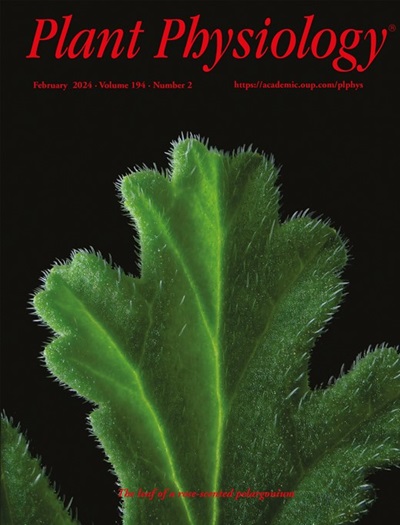Nitro-fatty acids modulate germination onset through S-nitrosothiol metabolism
IF 6.5
1区 生物学
Q1 PLANT SCIENCES
引用次数: 0
Abstract
Nitro-fatty acids (NO2-FAs) have emerged as key components of nitric oxide (NO) signalling in eukaryotes. We previously described how nitro-linolenic acid (NO2-Ln), the major NO2-FA detected in plants, regulates S-nitrosoglutathione (GSNO) levels in Arabidopsis (Arabidopsis thaliana). However, the underlying molecular mechanisms remain undefined. Here, we used a combination of physiological, biochemical, and molecular approaches to provide evidence that NO2-Ln modulates S-nitrosothiol (SNO) content through S-nitrosylation of S-nitrosoglutathione reductase1 (GSNOR1) and its impact on germination onset. The aer mutant (a knockout mutant of the alkenal reductase enzyme; AER) exhibits higher NO2-Ln content and lower GSNOR1 transcript levels, reflected by higher SNO content and S-nitrosylated proteins. Given its capacity to release NO, NO2-Ln mediates the S-nitrosylation of GSNOR1, demonstrating that NO2-FAs can indirectly modulate total SNO content in plants. Moreover, the ectopic application of NO2-Ln to dormant seeds enhances germination success similarly to the aer germination rate, which is mediated by the degradation of master regulator ABSCISIC ACID INSENSITIVE 5 (ABI5). Our results establish that NO2-FAs regulate plant development through NO and SNO metabolism and reveal a role of NO2-FAs in plant physiology.求助全文
约1分钟内获得全文
求助全文
来源期刊

Plant Physiology
生物-植物科学
CiteScore
12.20
自引率
5.40%
发文量
535
审稿时长
2.3 months
期刊介绍:
Plant Physiology® is a distinguished and highly respected journal with a rich history dating back to its establishment in 1926. It stands as a leading international publication in the field of plant biology, covering a comprehensive range of topics from the molecular and structural aspects of plant life to systems biology and ecophysiology. Recognized as the most highly cited journal in plant sciences, Plant Physiology® is a testament to its commitment to excellence and the dissemination of groundbreaking research.
As the official publication of the American Society of Plant Biologists, Plant Physiology® upholds rigorous peer-review standards, ensuring that the scientific community receives the highest quality research. The journal releases 12 issues annually, providing a steady stream of new findings and insights to its readership.
 求助内容:
求助内容: 应助结果提醒方式:
应助结果提醒方式:


